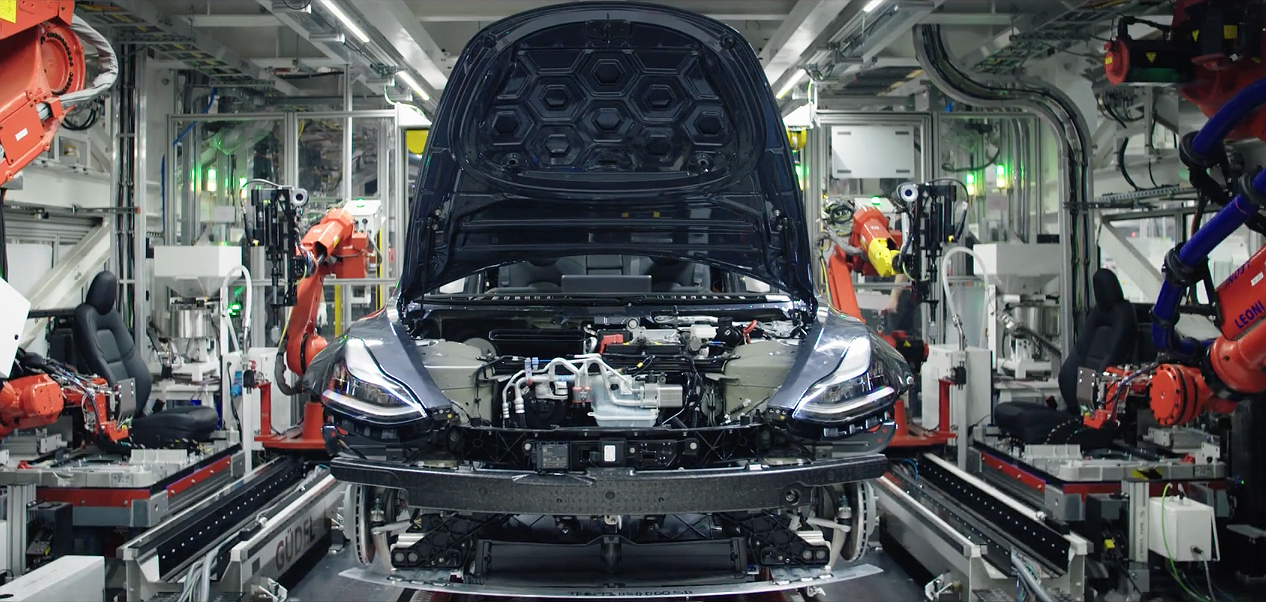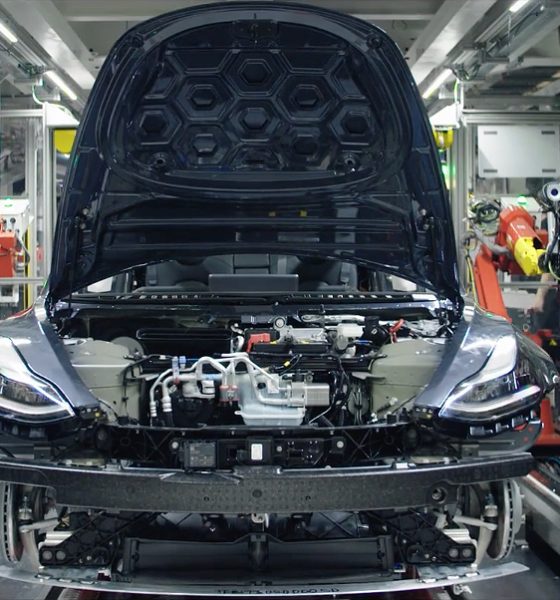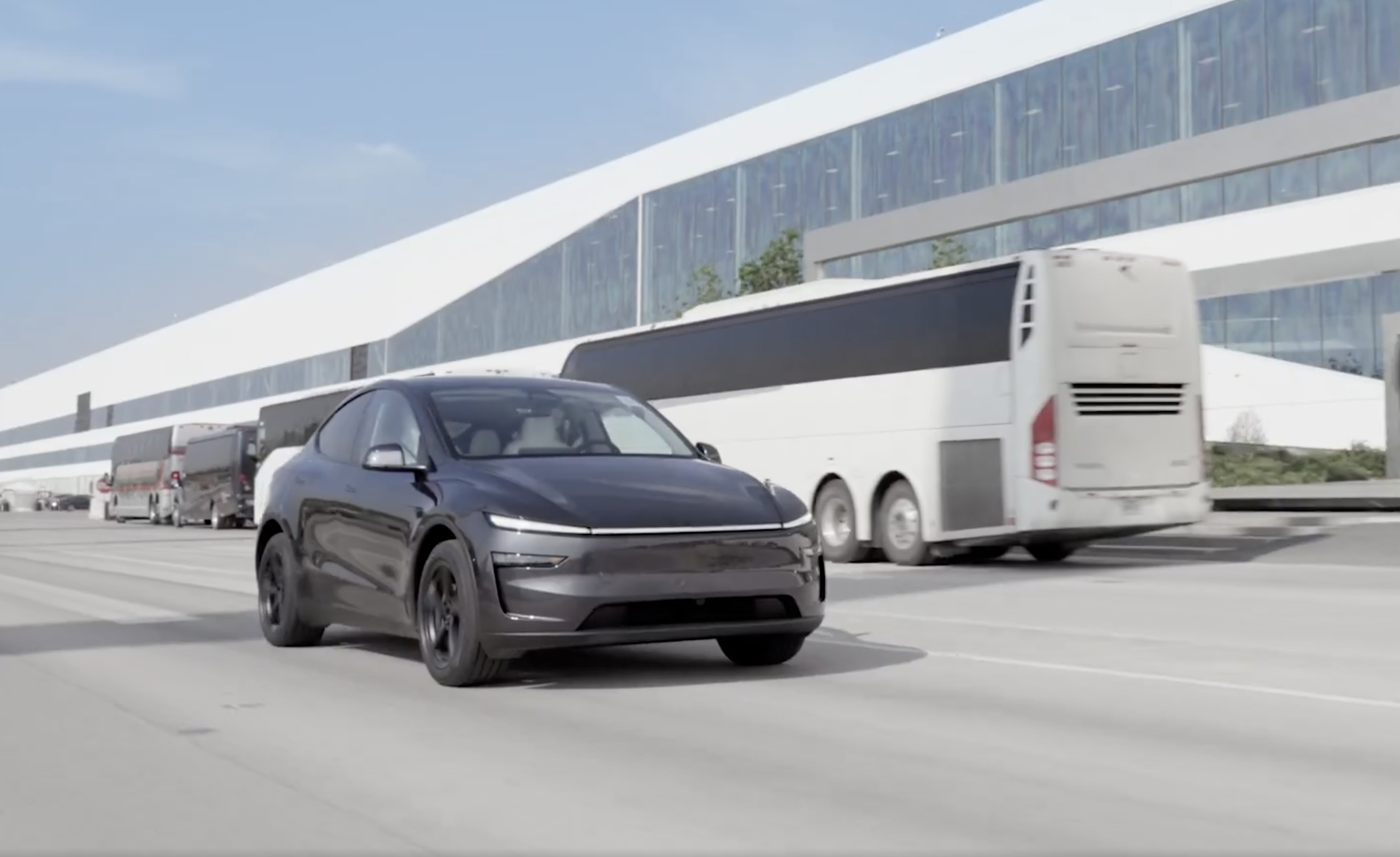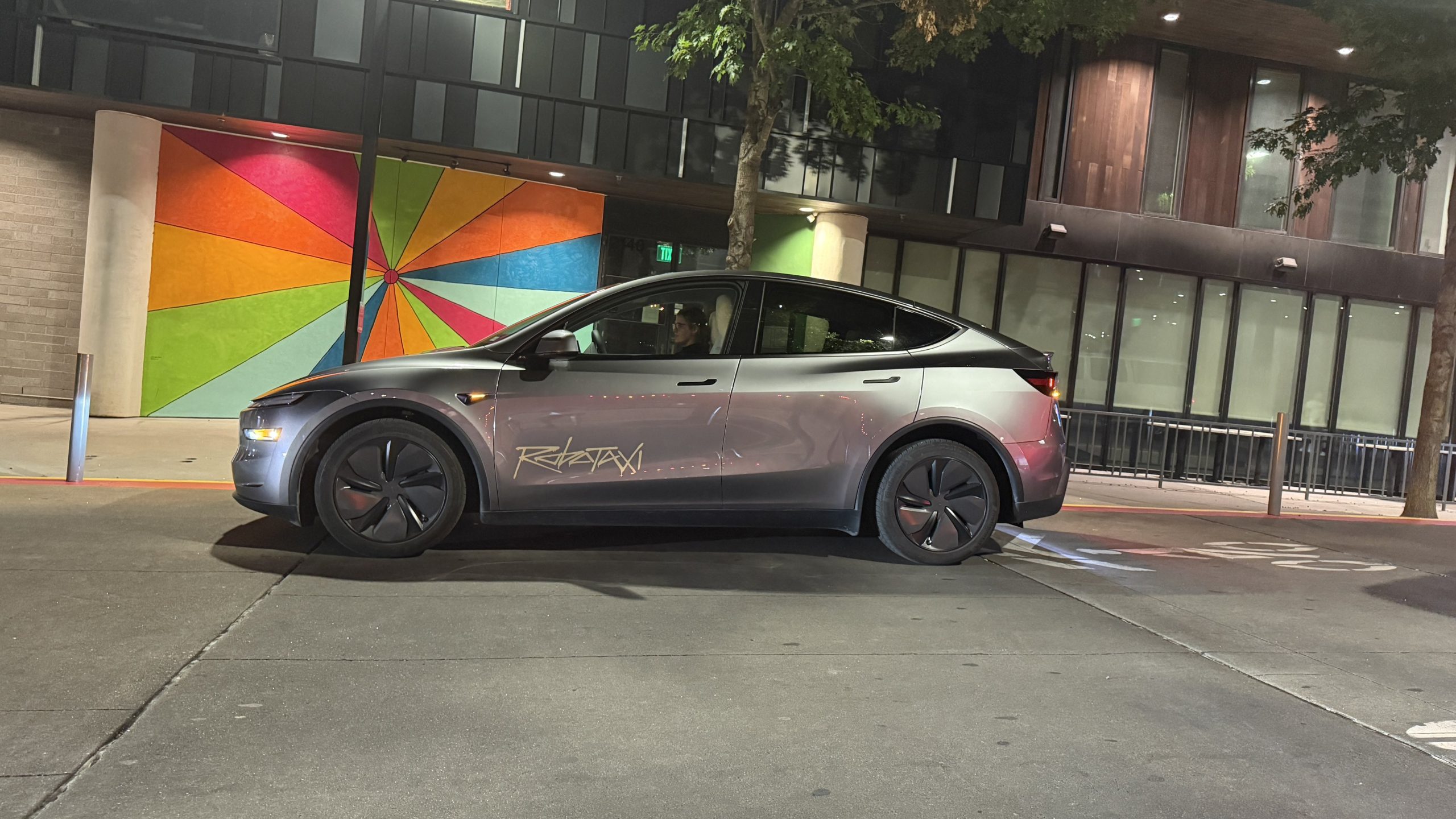

Investor's Corner
Tesla registers over 10,000 new Model 3 VINs as Dual Motor production ramp continues
Tesla has registered two large batches totaling more than 10,000 new Model 3 VINs over the weekend, in what appears to be a sign of a renewed production push for the electric sedan. Both batches, the first being 2,625 registrations and the other being 7,903, are estimated to be comprised of dual motor AWD vehicles.
#Tesla registered 7,903 new #Model3 VINs. ~100% estimated to be dual motor. Highest VIN is 89107. https://t.co/OZqpp8nPjs
— Model 3 VINs (@Model3VINs) August 5, 2018
#Tesla registered 2,625 new #Model3 VINs. ~88% estimated to be dual motor. Highest VIN is 81204. https://t.co/SVarfCqPe5
— Model 3 VINs (@Model3VINs) August 4, 2018
With the addition of this weekend’s 10,528 new Model 3 filings, Tesla has now registered a total of 89,107 vehicles since the electric car started production last year. These latest filings are among Tesla’s most significant yet, considering that the company’s VIN registrations only went past the 10,000-mark near the end of January, roughly six months into the electric car’s production.
During Tesla’s Q2 2018 earnings call, CEO Elon Musk stated that Tesla was able to maintain the Model 3’s 5,000/week production rate across multiple weeks in July. Musk’s statement about the Model 3’s production falls in line with the trend displayed by VIN registrations during the first two weeks of the month. Immediately after the beginning of Q3 2018, Tesla went on a VIN-filing spree, registering 19,000 new Model 3 VINs in the first half of July.
During the latter half of last month, however, Tesla’s VIN filings plateaued, with the company registering only a few vehicles at a time until this weekend. Quite interestingly, these last two big batches of VIN filings also corresponded to dual motor variants of the Model 3. Twitter watchdog group @Model3VINs initially estimated the first batch of 2,625 Model 3 VINs to include Long Range RWD variants of the electric car, but in the following update, the group noted that all the filings appeared to be dual motor.
Tesla has only started rolling out the dual motor AWD and Performance variants of the Model 3 recently. Nevertheless, Tesla worldwide head of sales Robin Ren stated during the second quarter earnings call that the dual motor AWD and Performance Model 3’s combined orders are now more than the orders for the vehicle’s Long Range RWD variant. The Tesla executive further noted that interest in the Model 3 remains high, with the company having 60,000 test drive requests for the electric sedan in the United States alone.
If Robin Ren’s statements and the recent Model 3 VIN filings are any indications, it appears that Tesla’s push to upsell the higher-end variants of the electric car to consumers is starting to pay off. Tesla, after all, stopped anti-selling the vehicle after the end of Q2 2018, offering test drives to customers and promoting the Model 3 Performance. In a Twitter post, Elon Musk also encouraged reservation holders to test drive the Model 3 Performance even if they do not have orders for the top-tier vehicle.
With its 5,000/week target for the Model 3’s production being met, Tesla is now aiming to sustain and increase its manufacturing capability for the electric car. During his opening remarks in the Q2 2018 earnings call, CEO Elon Musk stated that Tesla is aiming to produce 7,000 vehicles per week throughout Q3 2018. Musk also noted that Tesla is expecting its ramp to 10,000 Model 3 per week to involve only a “tiny fraction” of the CapEx used when it ramped the vehicle to 5,000 units per week.

Investor's Corner
Tesla stock lands elusive ‘must own’ status from Wall Street firm

Tesla stock (NASDAQ: TSLA) has landed an elusive “must own” status from Wall Street firm Melius, according to a new note released early this week.
Analyst Rob Wertheimer said Tesla will lead the charge in world-changing tech, given the company’s focus on self-driving, autonomy, and Robotaxi. In a note to investors, Wertheimer said “the world is about to change, dramatically,” because of the advent of self-driving cars.
He looks at the industry and sees many potential players, but the firm says there will only be one true winner:
“Our point is not that Tesla is at risk, it’s that everybody else is.”
The major argument is that autonomy is nearing a tipping point where years of chipping away at the software and data needed to develop a sound, safe, and effective form of autonomous driving technology turn into an avalanche of progress.
Wertheimer believes autonomy is a $7 trillion sector,” and in the coming years, investors will see “hundreds of billions in value shift to Tesla.”
A lot of the major growth has to do with the all-too-common “butts in seats” strategy, as Wertheimer believes that only a fraction of people in the United States have ridden in a self-driving car. In Tesla’s regard, only “tens of thousands” have tried Tesla’s latest Full Self-Driving (Supervised) version, which is v14.
Tesla Full Self-Driving v14.2 – Full Review, the Good and the Bad
When it reaches a widespread rollout and more people are able to experience Tesla Full Self-Driving v14, he believes “it will shock most people.”
Citing things like Tesla’s massive data pool from its vehicles, as well as its shift to end-to-end neural nets in 2021 and 2022, as well as the upcoming AI5 chip, which will be put into a handful of vehicles next year, but will reach a wider rollout in 2027, Melius believes many investors are not aware of the pace of advancement in self-driving.
Tesla’s lead in its self-driving efforts is expanding, Wertheimer says. The company is making strategic choices on everything from hardware to software, manufacturing, and overall vehicle design. He says Tesla has left legacy automakers struggling to keep pace as they still rely on outdated architectures and fragmented supplier systems.
Tesla shares are up over 6 percent at 10:40 a.m. on the East Coast, trading at around $416.
Investor's Corner
Tesla analyst maintains $500 PT, says FSD drives better than humans now
The team also met with Tesla leaders for more than an hour to discuss autonomy, chip development, and upcoming deployment plans.

Tesla (NASDAQ:TSLA) received fresh support from Piper Sandler this week after analysts toured the Fremont Factory and tested the company’s latest Full Self-Driving software. The firm reaffirmed its $500 price target, stating that FSD V14 delivered a notably smooth robotaxi demonstration and may already perform at levels comparable to, if not better than, average human drivers.
The team also met with Tesla leaders for more than an hour to discuss autonomy, chip development, and upcoming deployment plans.
Analysts highlight autonomy progress
During more than 75 minutes of focused discussions, analysts reportedly focused on FSD v14’s updates. Piper Sandler’s team pointed to meaningful strides in perception, object handling, and overall ride smoothness during the robotaxi demo.
The visit also included discussions on updates to Tesla’s in-house chip initiatives, its Optimus program, and the growth of the company’s battery storage business. Analysts noted that Tesla continues refining cost structures and capital expenditure expectations, which are key elements in future margin recovery, as noted in a Yahoo Finance report.
Analyst Alexander Potter noted that “we think FSD is a truly impressive product that is (probably) already better at driving than the average American.” This conclusion was strengthened by what he described as a “flawless robotaxi ride to the hotel.”
Street targets diverge on TSLA
While Piper Sandler stands by its $500 target, it is not the highest estimate on the Street. Wedbush, for one, has a $600 per share price target for TSLA stock.
Other institutions have also weighed in on TSLA stock as of late. HSBC reiterated a Reduce rating with a $131 target, citing a gap between earnings fundamentals and the company’s market value. By contrast, TD Cowen maintained a Buy rating and a $509 target, pointing to strong autonomous driving demonstrations in Austin and the pace of software-driven improvements.
Stifel analysts also lifted their price target for Tesla to $508 per share over the company’s ongoing robotaxi and FSD programs.
Investor's Corner
Tesla wins $508 price target from Stifel as Robotaxi rollout gains speed
The firm cited meaningful progress in Tesla’s robotaxi roadmap, ongoing Full Self-Driving enhancements, and the company’s long-term growth initiatives.

Tesla received another round of bullish analyst updates this week, led by Stifel, raising its price target to $508 from $483 while reaffirming a “Buy” rating. The firm cited meaningful progress in Tesla’s robotaxi roadmap, ongoing Full Self-Driving enhancements, and the company’s long-term growth initiatives.
Robotaxi rollout, FSD updates, and new affordable cars
Stifel expects Tesla’s robotaxi fleet to expand into 8–10 major metropolitan areas by the end of 2025, including Austin, where early deployments without safety drivers are targeted before year-end. Additional markets under evaluation include Nevada, Florida, and Arizona, as noted in an Investing.com report. The firm also highlighted strong early performance for FSD Version 14, with upcoming releases adding new “reasoning capabilities” designed to improve complex decision-making using full 360-degree vision.
Tesla has also taken steps to offset the loss of U.S. EV tax credits by launching the Model Y Standard and Model 3 Standard at $39,990 and $36,990, Stifel noted. Both vehicles deliver more than 300 miles of range and are positioned to sustain demand despite shifting incentives. Stifel raised its EBITDA forecasts to $14.9 billion for 2025 and $19.5 billion for 2026, assigning partial valuation weightings to Tesla’s FSD, robotaxi, and Optimus initiatives.
TD Cowen also places an optimistic price target
TD Cowen reiterated its Buy rating with a $509 price target after a research tour of Giga Texas, citing production scale and operational execution as key strengths. The firm posted its optimistic price target following a recent Mobility Bus tour in Austin. The tour included a visit to Giga Texas, which offered fresh insights into the company’s operations and prospects.
Additional analyst movements include Truist Securities maintaining its Hold rating following shareholder approval of Elon Musk’s compensation plan, viewing the vote as reducing leadership uncertainty.
@teslarati Tesla Full Self-Driving yields for pedestrians while human drivers do not…the future is here! #tesla #teslafsd #fullselfdriving ♬ 2 Little 2 Late – Levi & Mario








